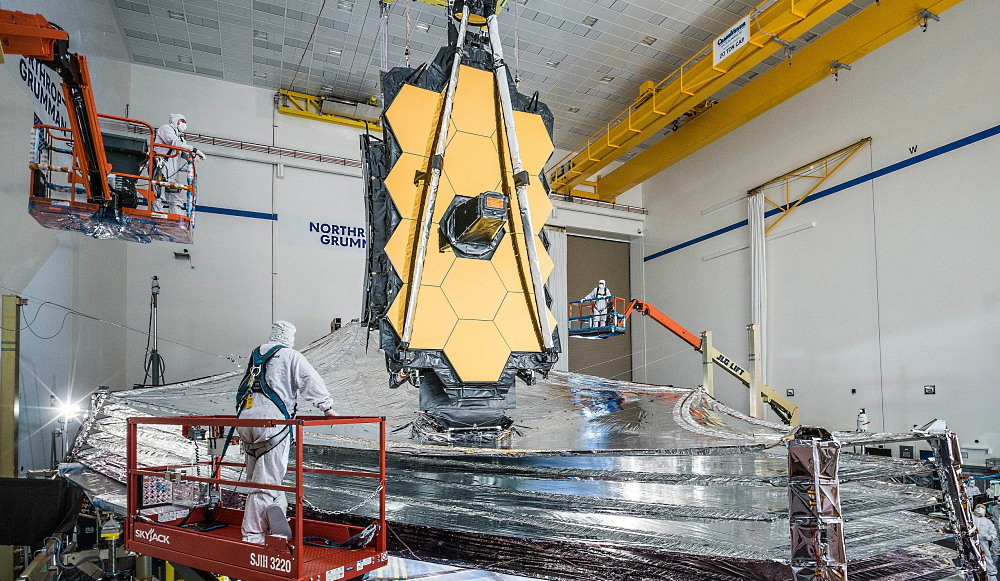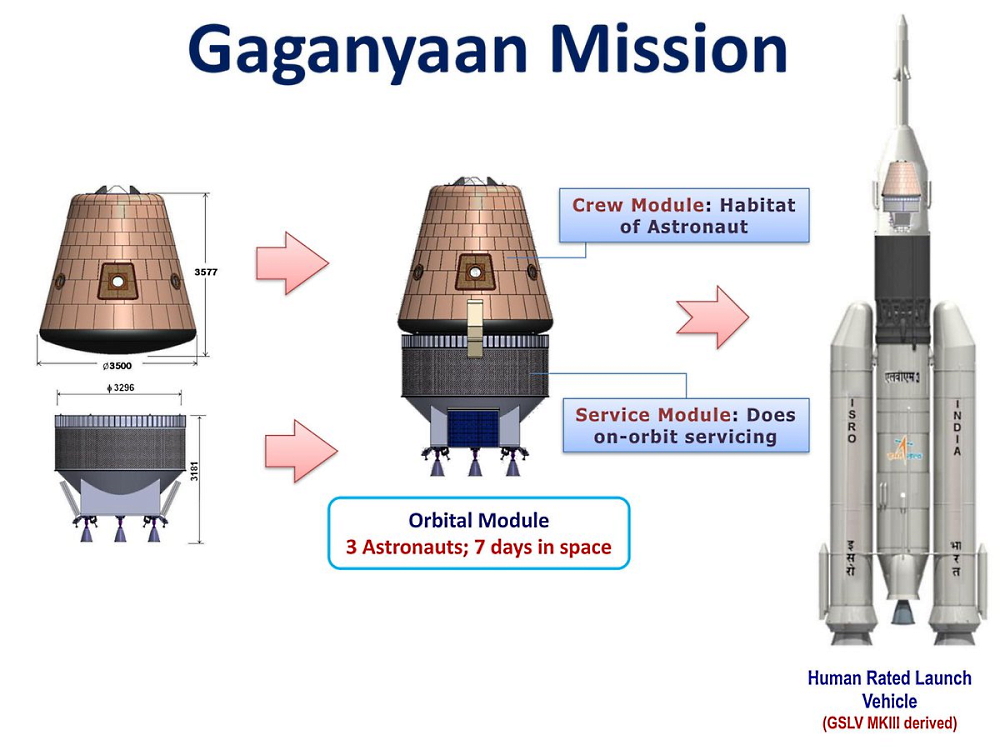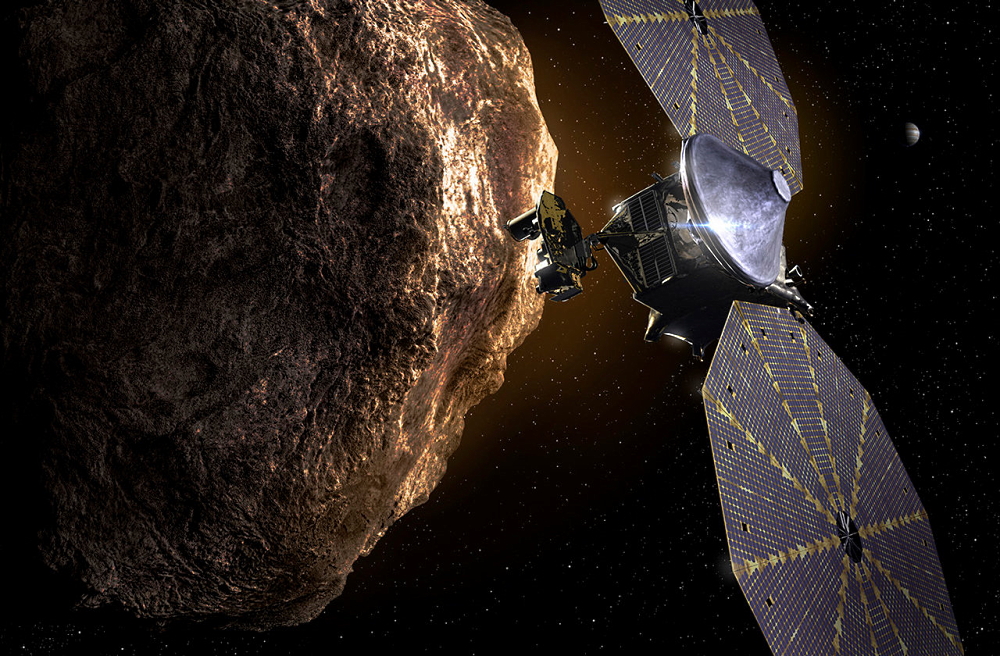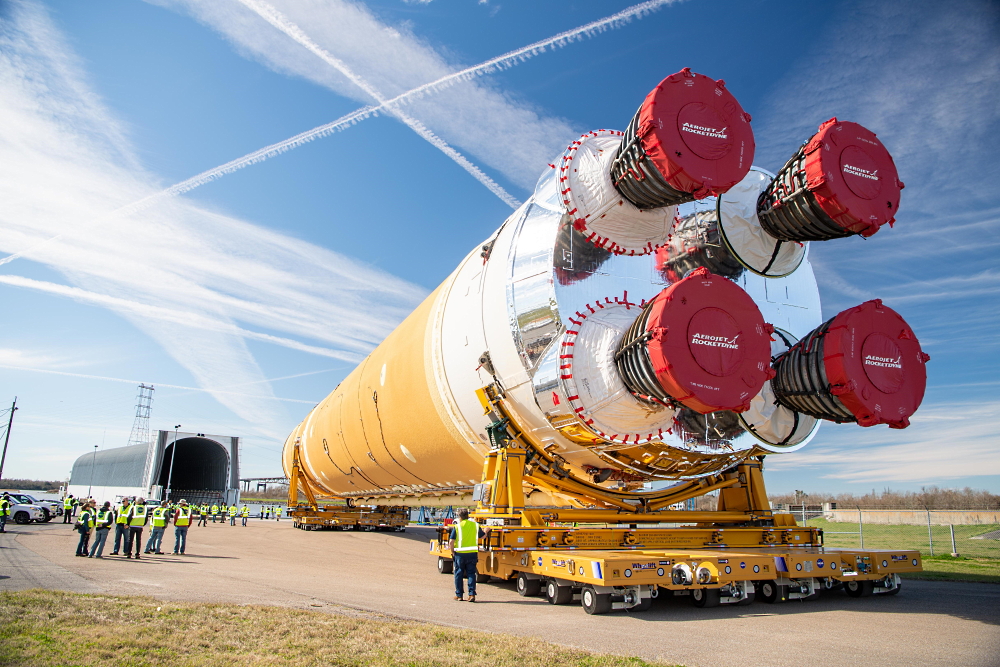
The James Webb telescope sunscreen was last deployed on the ground, photo NASA / Chris Gunn
Manned astronautics

«» , «»,
One of the main events of the year will be the start of construction of a Chinese multi-module orbital station, which in its fully deployed form will have three modules and weigh about half the Soviet-Russian Mir. In the first half of the year, the first module "Tianhe" ("Milky Way") will go into orbit. It will have a mass of about 24 tons and the functionality of the base module - engines, an attitude control system, one stern and four bow docking nodes, a hatch for spacewalk and other necessary elements. In the same year, the launch of the Wentian laboratory module is planned with redundant critical components, additional storage space, solar panels and an airlock. The module will need to dock to the front axial docking port and then,using the analogue of the "Lappa" manipulator of the "Mir" station, it will move to the side docking port. Also planned are two visiting expeditions on the ships "Shenzhou" and two launches of cargo ships "Tianzhou".

«» , /
The ISS will continue to age this year, and besides the continuation of the epic with attempts to identify and seal the air leaks in the transition compartment of the Zvezda module, I am afraid we will still hear news about the next breakdowns and problems. But the station should finally be supplemented with the "Science" module - its launch is scheduled for July 15. And at the end of the year, the modified Progress MS-UM with the Prichal module will go into space. At the same time, 2021 may be a year of a sharp increase in tourism to the space station - the launch of Soyuz with two tourists is scheduled for December, and at the end of the year, Crew Dragon from Axiom Space with three tourists should go to the station. Another manned "Dragon" from Space Adventures is also due to fly into an orbit up to 1000 km high at the end of the year without docking with the ISS.On March 29, it is planned to send a Boeing Starliner to the ISS in an unmanned version, this is the second attempt to conduct a test flight of the spacecraft, which will also carry people to the station. And the Crew Dragon, which overtook him, will have to start in March and September with new "shift workers" under the NASA Commercial Crew Program.

Scheme of the "Gaganyan" ship
And, finally, this year it is planned to start testing the Indian ship "Gaganyan", so far in an unmanned version. It is expected that after two test flights, around 2022, India will become the fourth country (after the USSR, the USA and China) to independently launch a person into space.
Unmanned astronautics

Launch of the Perseverance rover, photo by Alex Polimeni / Spaceflight Now
First of all, the Martian missions sent last summer will have to start working at the beginning of the year. On February 18, right from the flight trajectory, the NASA Perseverance rover will enter the atmosphere of Mars. And during February the Chinese "Tianwen-1" and "Al-Amal" of the UAE will enter the Martian orbit. Then the Chinese machine will land the rover in April.

Lucy, NASA image
On October 31, the James Webb telescope is scheduled to take off on a long-awaited flight, which was originally scheduled to start operation in 2007 and has been many times since then .exceeded both timelines and budgets, irritating numerous high-level commissions. In the same month, on October 1, with a reserve date of October 30, Luna-25, a project that was invented back in 1997 , should fly (but it lost competitions and didn't move at all for a while, so the earliest known scheduled launch date was 2011). It is also planned to send several devices to the moon at once - two under the NASA Commercial Lunar Payload Services program, the Nova-C landing craft from Intuitive Machines (October) and Peregrine from Astrobotic Technology (Q4). And three more orbital and one lander will go on the first test flight of the SLS launch vehicle in November. Also in October or November, a very curious spacecraft Lucy should fly - it will go to study the Trojan asteroids of Jupiter, which may represent the remnants of planetary embryos, and tell about how the formation of planets took place in the young solar system. Hence the name of the probe: "Lucy" - Australopithecus skeleton,and the probe can detect the "remains" of the era of planetary formation.
-

( ) SLS, NASA
In November, another long-term construction is to fly for the first time - the super-heavy SLS launch vehicle. If the test flight is successful, then it is she who will send people to fly around the moon in 2023 on the Orion spacecraft, and in 2024 astronauts will go on her for a new landing on the moon. Also planned for this year is the maiden flight of ULA's Vulcan Centaur rocket, which is cheaper than Atlas V and Delta IV from the same company. Also scheduled for 2021 are the maiden flight of Blue Origin's New Glenn heavy rocket and SpaceX's Starship orbital flight. In the first half of the year, it is expected to test the new Indian carrier rocket SSLV, and in the second half - the independently developed South Korean Nuri (the Naro-1 rocket used the Russian first stage). The Japanese space agency is about to test the new H3 launch vehicle. And, of course,new missiles are going to be tested by private startups - South Korean, Taiwanese, several Chinese and American.
Russian launches
In addition to those mentioned above, interesting Russian launches include Arktika-M No. 1, which will go into orbit Molniya , Obzor-R No. 1 Earth observation satellite, and the fourth Resurs-P ( here you can read about Russian ERS grouping) and three launches of "Angara", one - heavy A5 and two light A1.2. Three GLONASS-K are to fly, one of them is the K2 modification. The active launch of OneWeb satellites is also expected, so there should be more launches than usual.